#doc adams
Explore tagged Tumblr posts
Text




It's not every day you get to weaponize your boyfriend's criminal past to aid in catching outlaws. But when you do, you beam with pride at a job well done.
@someguywriting @zeawesomebirdie
25 notes
·
View notes
Text
old man grumbling
@zeawesomebirdie @thefandomlesbian
#gunsmoke#james arness#amanda blake#milburn stone#matt dillon#miss kitty#kitty russell#doc adams#i love his old manness#hes so grumpy
7 notes
·
View notes
Text
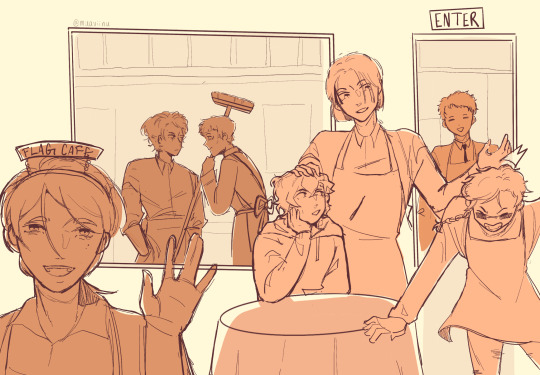
the flags cafe be so good until chuuya’s brother makes it go bankrupt (guys they all live prommy)
#SORRY TO THE ANON WHO ASKED FOR THIS I DIDNT MEAN TO TAKE TOO LONG#bungou stray dogs#bsd#bungo stray dogs#bsd chuuya#chuuya nakahara#bsd adam#bsd stormbringer#stormbringer#bsd lippmann#bsd pianoman#bsd albatross#bsd doc#bsd verlaine#bsd fanart#bsd flags#bungo cafe au#val art
664 notes
·
View notes
Text
it’s always blah blah blah why are you Still so obsessed with the raven cycle blah blah blah it’s been 5 years give it up already blah blah blah seriously it’s embarrassing
like okay????
imagine reading the raven cycle, a literary masterpiece, and then simply, moving on. imagine Not making it your Whole Personality. i think there is something wrong with those people.
some of us have annotated all our books to the point of no return. some of us have spreadsheets. some of us are working on thesis length essays about the raven cycle for fun.
get. on. board.
#spent the morning in my google doc so prepare for that sometime in the next million fucking years#it’s taking a long time#but I AM ENJOYING MYSELF#i think some people just need a more interesting hobby#trc#the raven cycle#tdt#maggie stiefvater#ronan lynch#adam parrish#blue sargent#richard campbell gansey iii#pynch#the raven boys#adam and ronan#blue lily lily blue#the gangsey#mine
622 notes
·
View notes
Text
Tango, singing: You would not believe your arms
Zed: If ten million car alarms
Impulse: Blared in the night as you tried to sleep
Xisuma: IT'S THREE AM! GO TO BED!
#happy one-day-late birthday adam young (aka owl city)#incorrect hermitcraft quotes#hermitcraft incorrect quotes#tango#tangotek#tango tek#zedaph#zedaphplays#impulse#impulsesv#xisuma#xisumavoid#team zit#clumsy cooking#clumsy cooking duo#derp duo#hermitcraft#hermitblr#I wanted to do this on july 5 but doc's bday took precedence for obvious reasons
249 notes
·
View notes
Text
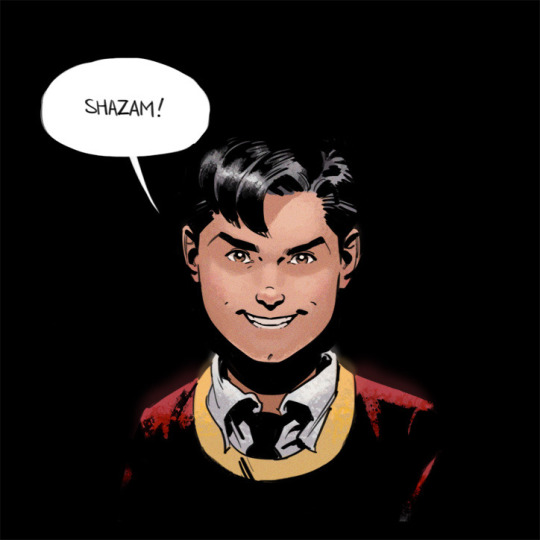


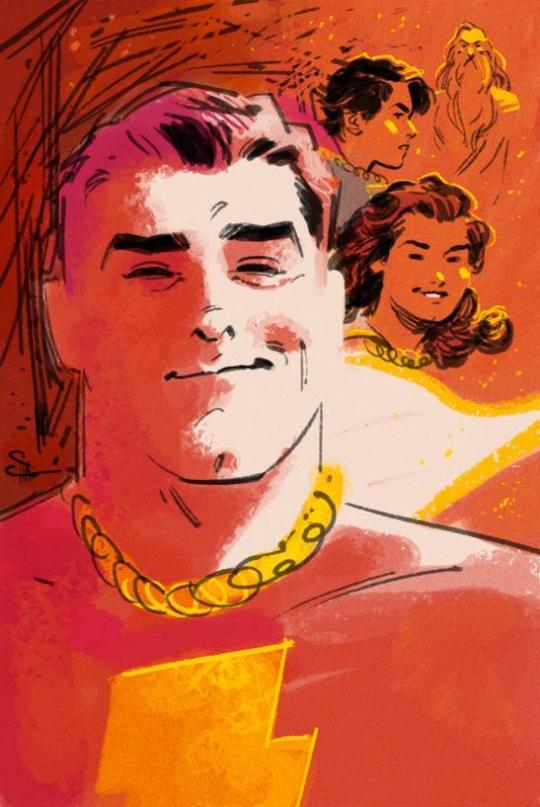
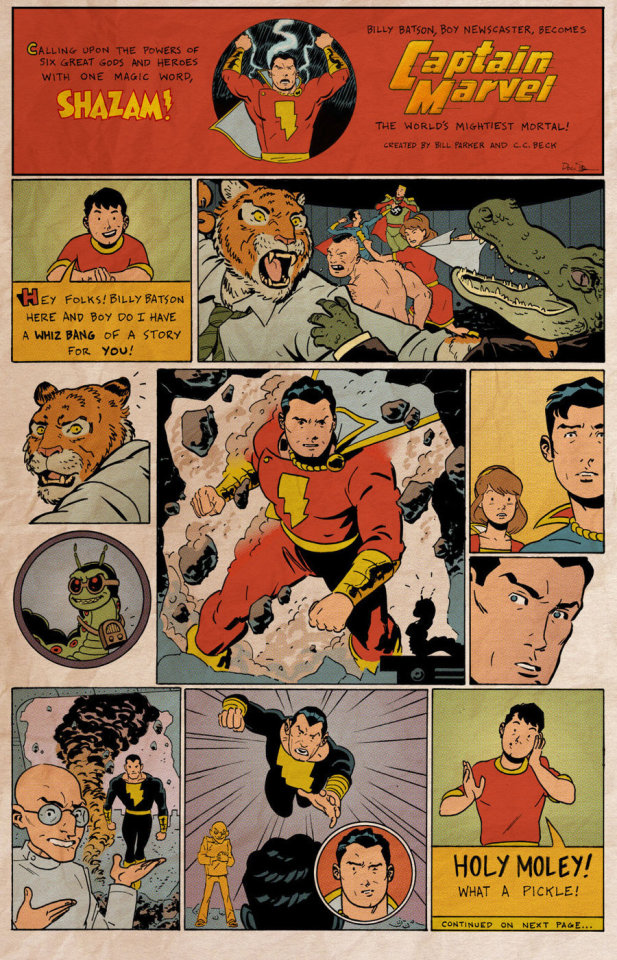
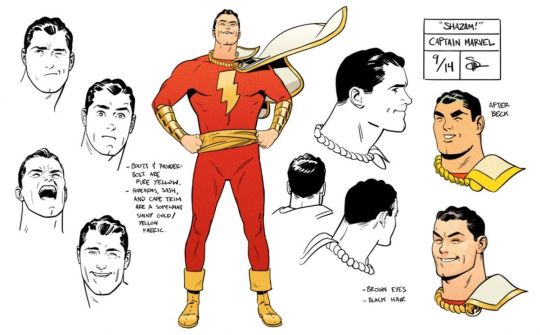
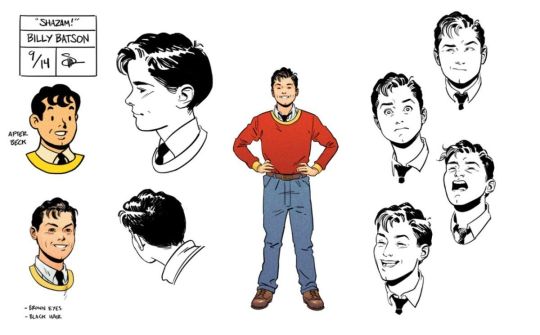
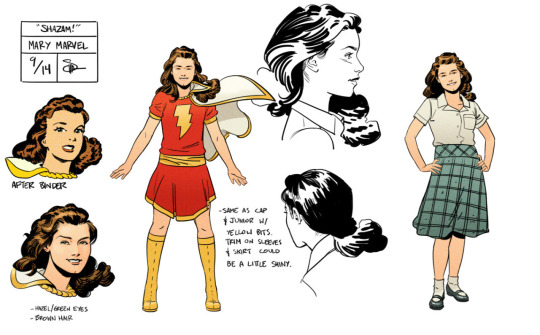
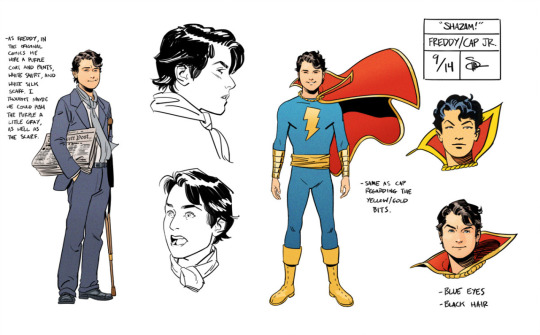

Shazam
Art by Doc Shaner
#Comics#Shazam Family#Shazam#Captain Marvel#Doc Shaner#Mary Marvel#Captain Marvel Jr#Art#Evan Shaner#Evan Doc Shaner#Billy Batson#Black Adam#Talky Tawny#Wizard Shazam#Fantasy#Fantasy Comics#Science Fiction#Fawcett Comics#Fawcett#DC Comics#DC
199 notes
·
View notes
Text



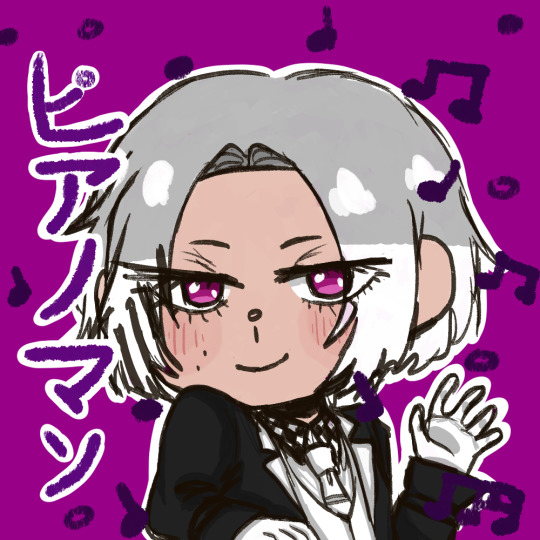
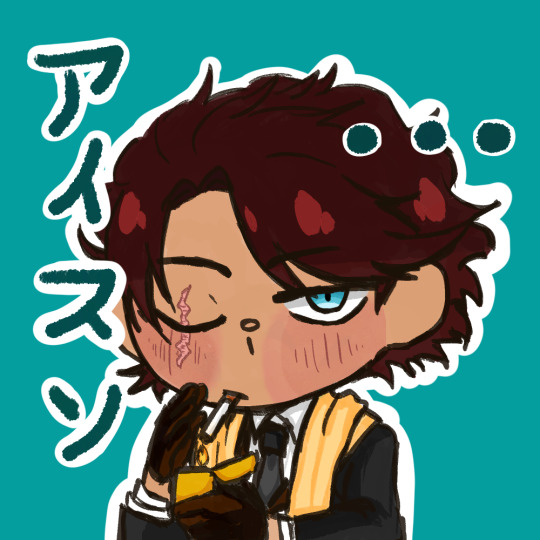

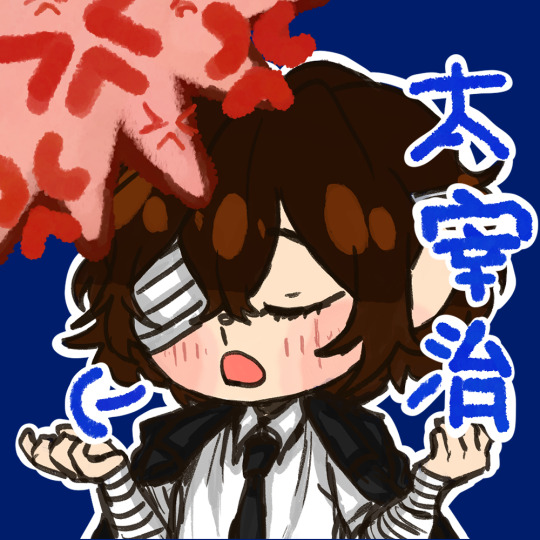

DO NOT USE WITHOUT CREDIT
First half of SB matching pfps
#bungou stray dogs#bungou#chuuya nakahara#dazai osamu#bsd chuuya#bsd skk#skk#bsd dazai#soukoku#bsd albatross#albatross#bsd iceman#iceman#bsd pianoman#painoman#bsd lippmann#lippman#bsd adam#bsd doc#bsd stormbringer#stormbringer#Bungou stray dogs stormbringer#bsd icons#bsd pfp
664 notes
·
View notes
Text
we as a society have failed if fanfiction sites are not brimming with maitlands (1988) content. adam and barbara small town cozy romcom before the events of the movie. adam and barbara enjoying new life after the events of the movie. adam barbara adam barbara the possibilities are endless….the glimpses of their domestic bliss the movie gives are not enough that was only scratching the surface. if they are too boring for you maybe you just don’t believe in true love.
#beetlejuice#barbara maitland#adam maitland#maitlands#tempted to break out the google docs from high school and revisit some dabbles#the maitlands
78 notes
·
View notes
Text
Been thinking for a while now about "I wouldn't lie to you" becoming just this absolutely sacred statement between Adam and Lawrence. Something they don't just throw around lightly. A means of showing their intentions are completely genuine, and they mean what they're saying say with their entire hearts
Especially applicable to situations where either of them are having really bad bouts of self-doubt and just worry about this and that
For example,
"I'm sorry you have to put up with me,"
"There's nothing to 'put up' with."
"...That's not true,"
"It is." A pause. "I wouldn't lie to you,"
It simply hits so hard in just about any emotional scene I've thought of with them like... AGHHH 😭
#who's who in that little bit of dialogue there? yes :)#more things that'll be in my headcanon doc but I'm sharing this one now coz. it is on the brain real bad right now#they make me feel so unwell#sawposting#saw#saw franchise#sawtism#saw 2004#saw thoughts#chainshipping#lawrence gordon#adam stanheight#adam faulkner stanheight
82 notes
·
View notes
Photo
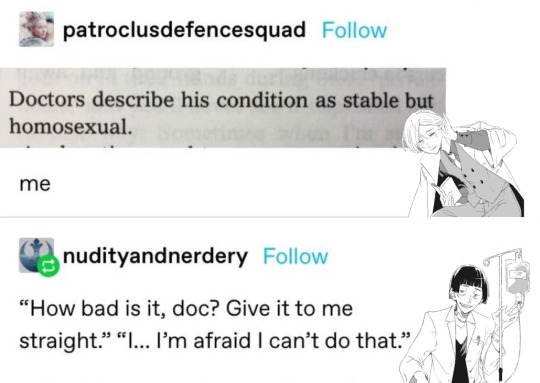




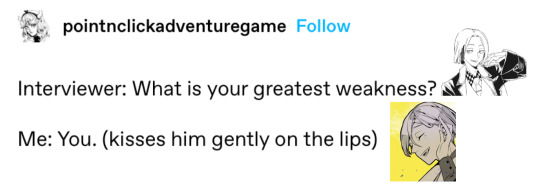



stormbringer as textposts(mostly flags)!
#i wonder who my favorite flag issss you cannot tellll like at allll#stormbringer#bsd#bungo stray dogs#these are very lazy#the flags#the flags bsd#i resisted tagging them as ‘the fags’ ugh#bsd doc#bsd adam#adam frankenstein#chuuya nakahara#bsd chuuya#chuuya#bsd albatross#bsd lippmann#bsd pianoman#bsd iceman#paul verlaine#bsd verlaine#storm bringer#bungou stray dogs#i love the fags#gem tag
532 notes
·
View notes
Text


I have many Garten of Banban thoughts.
Many, many thoughts...
-Specifically about this guy! I just think hes neat~
Also I like to think he's more visually emotive than vocally, kinda gives into that uncanny vibe that I tend to lean towards.
If you can't read my handwriting feel free to ask me for clarification!
#garten of banban#gobb#gobb fanart#banban#gobb banban#adam uthman#uthman adam#dr uthman#nova's art#I have a doc of all my HCs for this bastard (/aff)#also pls pls PLS feel free to bother me about this game#I'd like to hear other's HCs as well!#also I may be a simp but let's not worry about that /silly
58 notes
·
View notes
Text


"That's my man."
"I can reach around him if I want to."
Because that's a normal thing to say to your best friends.
#gunsmoke#james arness#milburn stone#dennis weaver#chester goode#matt dillon#doc adams#galen doc adams#gay cowboys#yes i understand this exchange was pertaining to the checkers game#but it very much sounded like they were talking about Chester sitting in the middle of the table
22 notes
·
View notes
Text
doc and kitty are precious to me
@zeawesomebirdie @thefandomlesbian
#gunsmoke#milburn stone#amanda blake#doc adams#kitty russell#matt/chester are lovely#doc & kitty are also lovely
6 notes
·
View notes
Text



ross in all black let me SU— [gunshots]
59 notes
·
View notes
Text
THREES THREES THREES:
Oh hello. I want to talk about the stylistic/textual role of Threes in The Raven Cycle.
Threes – as a general concept and as a number – are a major symbol and motif in the series. Maggie tells us that threes are important from the very first book: from Maura’s favorite saying being “good things come in threes” to Persephone telling Adam that “things are always growing to three or shrinking to three,” threes are discussed at length in the text of the narrative. Maggie also shows us that threes are important as a motif/symbol for important aspects of the story: three Raven Boys, three Fox Way women, three Lynch brothers, three main ley lines, three sleepers, etc. Threes are, textually, incredibly significant in The Raven Cycle, and we know this because we are shown AND told it throughout the entirety of the books.
We all know the significance that is given to threes in the story itself, but what I want to talk about is the usage of a thrice-repeated word or short phrase (going forward I’m referring to this as “Threes” or “a Three”) as one of Maggie’s writing signatures (across the series, there are 65 Threes). This creates a meta level to threes being an important aspect of The Raven Cycle universe. A classic example of a Three (one of my favorites, in fact) is from The Dream Thieves:
“As they walked, a sudden rush of wind hurled low across the grass, bringing with it the scent of moving water and rocks hidden in the shadows, and Blue thrilled again and again with the knowledge that magic was real, magic was real, magic was real.” (TDT, 12)
In a way, the Threes join the intradiegetic (what is happening within the narrative itself) with the extradiegetic (what the narration is communicating solely to the reader). The reader and characters are told explicitly that the number three is significant, important, notable, and powerful. In using Threes as a writing signature after giving the reader that information, the Threes are designed to signal to the reader that this line, this moment, is important.
So the question is: What Are The Threes Trying to Tell the Reader???
Amazing question.
In my recent TRC reread, I was already keeping track of Threes, because I was curious to see how many times they appeared. And then my sister, who was also rereading, said something interesting (after reading this Three from The Raven Boys):
“He was full of so many wants, too many to prioritize, and so they all felt desperate. To not have to work so many hours, to get into a good college, to look right in a tie, to not still be hungry after eating the thin sandwich he’d brought to work, to drive the shiny Audi that Gansey had stopped to look at with him once after school, to go home, to have hit his father himself, to own an apartment with granite countertops and a television bigger than Gansey’s desk, to belong somewhere, to go home, to go home, to go home.” (TRB, 370)
My sister said: “Adam’s like Dorothy.” And then she said: “Wait. Do you think the Threes are like a spell? Or… a wish?”
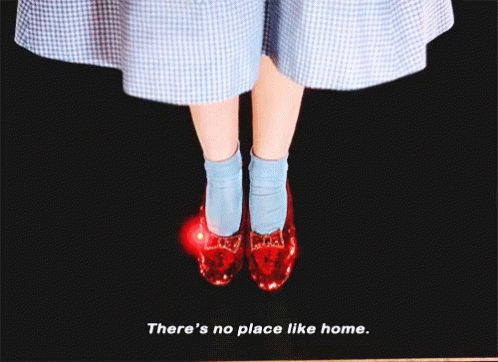
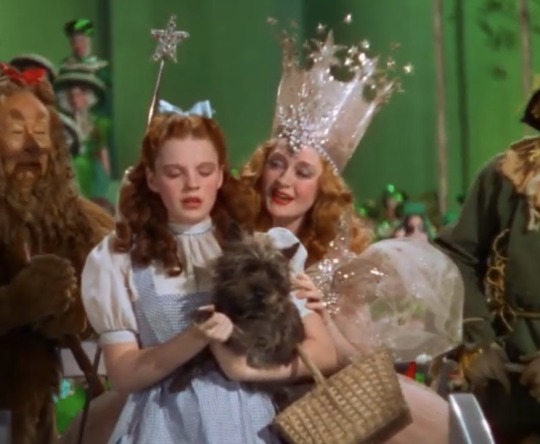
Which was……. Interesting.
What I have determined, after completing my reread and spending way too much time analyzing this, is that a Three is either a wish, a hope, a longing, a prayer – or, alternately, a warning, a curse, a negative promise.
In either sense, Threes are a foreshadowing of what is to come – whether it be good or bad. Threes exist to signal to the reader that they should be paying close attention to whatever is being said or observed.
Threes in….. Everything Else:
Before we get too far into TRC Threes, let’s talk about the precedent for three being an important number in art, math, storytelling, etc. I found some interesting information about how three is a satisfying number for the brain:
Grouping things in threes leverages the power of repetition to aid memory; denote emotional intensity or importance; and ease persuasion (research by Shu & Carlson (2014) found that three positive claims is the most effective for persuasion).
Three is the smallest number that the brain can still recognize as a pattern, and the brain loves pattern and repetition. This is true in visual art – having three main compositional figures to create a pleasing image – and also in storytelling and narrative. Using threes for repetition in storytelling is a very common occurrence.
Some classic examples of repetitive threes are Shakespeare’s “tomorrow and tomorrow and tomorrow” or Lincoln's “a government of the people, by the people, for the people.” In each of these examples, a repetition of three is used to create pleasing auditory rhythm. There is something inherently memorable about literary Threes.
Perhaps the most interesting information I found while digging into the precedent for threes is about the rule of threes in folktales. This information happens to come from Wikipedia (side note: Wikipedia is a modern tool of collective consciousness and we should utilize it more). This page describes how in its most basic form, the rule of threes in storytelling is just beginning, middle, and end. Because this is such a common convention, writers tend to “create triplets or structures in three parts.” It then talks more directly about the use of threes in folktales:
“Vladimir Propp in his Morphology of the Folk Tale, concluded that any of the elements in a folktale could be negated twice so that it would repeat thrice.”
This is especially interesting to me. The idea that an element of a folktale “could be negated twice so that it would repeat thrice” shows up prominently in the plot of The Raven Cycle – a book that is heavily influenced by folktale motifs – but also in so many of the folktales/fairytales we all know. A classic example of this would be Goldilocks and the Three Bears – Goldilocks must try porridge that is too hot, too cold, and then, finally, just right. The journey of these three actions is satisfying to the brain because it is a complete pattern: the third and final result of “just right” porridge is only satisfying because of the two “not right” porridges that preceded it.
Getting back to Stiefvater Threes:
For anyone who’s seen The West Wing (and even those who haven’t), here’s a good way to explain what I think the Threes are doing. You know that thing they do during a The West Wing “walk and talk” where two characters will be throwing information and little quips back and forth at each other rapid-fire, and then suddenly, they will both stop walking, and the camera will stop moving, and they’ll say a line that contains really important information that you need to know to understand the storyline of that episode? That’s what Maggie’s Threes are doing for the reader. That’s what 6:21 is doing for the characters. It’s intentional: the writers/directors/actors/camera operators on The West Wing know that they’re throwing a lot of information at you, and know that they need to get you to pay attention to the most important parts somehow, so they do it by forcing the viewer to lean in and listen. It changes the focus and energy of the scene from something with momentum to something that pauses, and therefore makes you pause.
The Threes compel the reader to pause and consider the information being delivered as more important than they might consider it if it was not written as a Three. “Maura’s expression was dark” does not read the same as “Maura’s expression was dark, dark, dark.” And in a text where characters directly state the magical importance of threes, compounded by three as an overarching motif, there is clear intention and meaning behind these written Threes.
In the context of TRC, Threes act as a fourth-wall break.
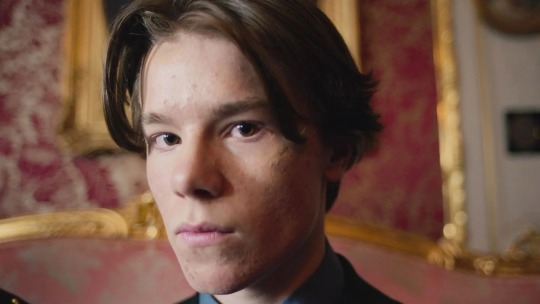
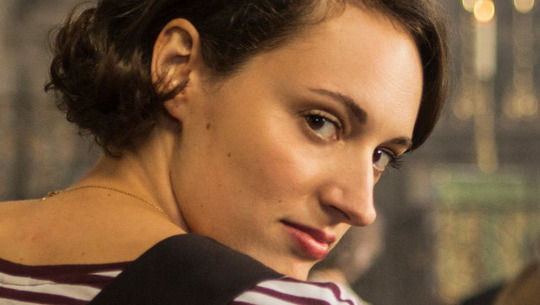
They are essentially a way to poke the reader and say: “Are you paying attention? Because you should be.”
These Threes use a symbolic motif – the rule of three – that is already heavily discussed in the text – to get the reader to pick up on the internal motivations of the character who is “wishing” their Three or the narration which is using a Three to foreshadow some important aspect of the plot.
The Threes are like the literary equivalent of a record scratch. It stops you in your tracks, breaking the established rhythm and making you take notice of what is being said in a new way.
Let’s Look at Some More Threes (but just a few don’t worry)!
1. We get a classic Three, and a very Gansey Three, right after the group comes out of Cabeswater:
“‘What about that thing in the tree?’ Blue asked. ‘Was that a hallucination? A dream?’
Glendower. It was Glendower. Glendower. Glendower” (TRB, 231).
Finding Glendower is one of Gansey’s core wishes, one of his core longings. Although this line is a literal answer to Blue’s question – he saw Glendower in the tree – in making it a Three, Maggie has given it added weight and meaning. It is prayer-like in its intention. It is almost an incantation: by saying it in Three, Gansey wishes it into being.
2. In The Raven Boys, after Gansey has bribed Pinter to keep Ronan at Aglionby and has learned that Noah has been dead the whole time they’ve known him, we are given this Three:
“The Pig exploded off the line. Damn Ronan. Gansey punched his way through the gears, fast, fast, fast” (TRB, 311).
This moment foreshadows what directly follows: a distinct lack of fast as the Camaro breaks down and Gansey is held at gunpoint by Whelk. This Three is not a prayer, but a warning, and an indicator to the reader that something important is about to happen. Had Gansey not been trying to go so “fast fast fast,” the car might not have broken down; because the Three incanted it, disaster follows.
3. To return to a Three I have already mentioned, but follows the typical Three structure:
“...to go home, to go home, to go home” (TRB, 370).
In this scene, Adam’s wish is less about actually wanting to return to his literal home, because his house was never really a home for him. Adam’s wish/longing is for a home that he could return to, that he would want to return to. He is longing for a place/feeling/experience that does not exist for him. The Three in this sentence comes after a string of active wishes/longings, and by ending with this Three, it casts a spell of sorts, honing in on the truest underlying wish that Adam has. In using the phrase “to go home” three times, the narrative is making sure you, the reader, know that this want, this need, this wish, is the most Important to Adam, and will drive his actions for the rest of his story.
Most of the Threes feel like this. They are often tacked on at the end of a sentence or embedded in a sentence. They’re an addendum to the action of the story. They’re like casting a spell – once to manifest, twice to charge, three to cast.
…..And Some Other Types of Threes:
Then there are the Threes that don't follow the typical pattern of the same word repeated three times one right after the other, but are still a Three in a different way.
There are short phrases/sentences that are repeated three times throughout a page or chapter. In the prologue of The Raven King, we get this:
“He was a king…
He was a king…
He was a king.
This was the year he was going to die.” (TRK, 1-3)
In this case, the Three acts as a promise of Gansey’s kinghood, but in ending the sequence with “this was the year he was going to die,” the promise of the three is given a condition: it is not going to be a joyful kinghood, but instead a kinghood intertwined with the death we’ve known is fated for Gansey.
One of Adam’s Threes from Blue Lily, Lily Blue, uniquely breaks the mold of Threes in a format that does not appear anywhere else in the four books:
“It was his father.
He opened the door.
It was his father.
He opened the door.
It was his father” (BLLB, 242).
❋ (We’ll talk about this one more in-depth later.)
There are also a few “unfinished” Threes:
In The Raven King when Ronan is having a nightmare (infected by the demon) about Matthew and the mask, he has this Three:
“Ronan’s throat was raw. I’ll do anything! I’ll do anything! I’ll do anythi
It was unmaking everything Ronan loved.
Please” (TRK, 96).
With the uncompleted Three, there is an uncast wish. Ronan’s wish is about Matthew, yes of course, but also about being willing to do anything to keep those he loves (ie. Adam, Gansey, Blue, his brothers) out of the reach of the “unmaking.” This unfinished Three serves to foreshadow the harm that does ultimately befall first Adam and then Gansey as a result of the unmaking of Cabeswater by the demon: without the Three spell completed, his wish is not fulfilled.
*This is Not all the uncommon/mold-breaking Threes, just a few that are interesting!
Do All Threes Come to Fruition???
The short answer is: No. Or at least not in that way.
Once again looking at the text of The Raven Cycle, we are given an answer of sorts. In discussing Gansey’s predicted death, Maura says:
“First of all, the corpse road is a promise, not a guarantee” (TRB, 155).
This seems to apply to Threes as well. Threes are not a guarantee. They are a promise. Not all Threes come to fruition the way one might expect – or at all, for that matter. The important part of Threes is not that they will definitely come true, it’s that they could come true, because the Three gives them the potential to come true.
Structure, Structure, Structure:
The main Threes structures are:
Three of the same word separated by commas:
“magic, magic, magic” (TRK, 59).
A short phrase/sentence separated by periods:
“My father. My father. My father” (TDT, 369).
A short sentence that is repeated three times throughout a page/paragraph:
“Gansey did not breathe…
Gansey did not breathe…
Gansey did not breathe” (TRK, 209).
A word that is repeated three times and is connected by “and”:
“Round and round and round!” (BLLB, 224)
Italics vs. Non Italics:
Italics in The Raven Cycle are often used for character’s inner thoughts/anxieties. This continues to be true in the context of Threes. A Three that is not written in italics indicates a promise, or some foreshadowing of a plot point being foretold through the Three – it is typically more “real” – whereas a Three that is written in Italics seems to indicate a wish/hope/longing that is unattainable in some way. Italics almost always indicate a Three that may never come to fruition, or at least not in the way the character hopes it will.
An example of this distinction can be found in chapter three (hah) (I don’t believe in coincidences and neither does Gansey) of The Raven King:
First we are met with Ronan wishing/hoping to return home:
“That morning, Ronan Lynch had woken early, without any alarm, thinking home, home, home” (TRK, 24).
This home, home, home, is in reference to the idea of home rather than the reality. Ronan is wishing to return to a home that does exist physically, but is not the same as in his memory – he wants to be at the Barns as it was in his childhood.
Then, in the very same chapter, Ronan actually returns home and we are given this Three:
“Slowly his memories of before — everything this place had been to him when it had held the entire Lynch family — were being overlapped with memories and hopes of after — every minute that the Barns had been his, all of the time he’d spent here alone or with Adam, dreaming and scheming.
Home, home, home” (TRK, 27).
This second home, home, home, is about the actual reality of being in his childhood home – the good and bad that has existed in the years since the childhood he longs for.
The Addition of AND:
The most notable use of “and” is in Noah’s very last chapter:
“Sometimes he got caught in this moment instead. Gansey’s death. Watching Gansey die, again and again and again” (TRK, 416).
When “and” is added into a Three, it becomes circular, cyclical. The “and” gives the Three a sense of infinity, or creates a loop of sorts.
This Three operates in the same way “tomorrow and tomorrow and tomorrow” does in Macbeth – it is meant to convey the endlessness of time, a relentless cycle of tomorrows.
❋ While there are not many of these Threes with “ands” in The Raven Cycle, there are other examples of Threes or Three-like occurrences that fulfill the same purpose as the “and.” For example, remember this Three:
“It was his father.
He opened the door.
It was his father.
He opened the door.
It was his father.” (BLLB, 242).
In this case, instead of the word “and,” the Three (It was his father) is connected by “he opened the door.” This Three is accomplishing the same feeling as “again and again and again” – the feeling of being caught in an endless loop.
Another example of an (implied) “and” in The Raven Cycle is: Gansey’s life. Gansey starts out alive and then dies as a child only to be reborn, and then killed again through his sacrifice, and then reborn for a final time. Gansey is Alive, Dead, Alive, Dead, Alive. And so Gansey’s life is a cycle of Three.
As with the Threes that contain “and,” Gansey starts where he ends: alive.
Other Ways Threes Show up in The Raven Cycle:
I will state the obvious once again: there are three Raven Boys, three Lynch brothers, three Fox Way women, three sleepers, three main ley lines (the lines that “seem to matter” to Glendower’s story), Gansey the Third (Gansey Three, Dick Three).
There are also the more obscure: the “three kinds of secrets” in The Dream Thieves prologue and epilogue; each Lynch brother inheriting three million dollars from Niall Lynch; the three figures with Blue’s face on the tapestry and later as a vision in Cabeswater; Adam and Gansey going to DC for three days; the shield pulled from the lake having three ravens embossed onto it; Ronan having dreamt Matthew at the age of three; the door to the Demon’s room needing “three to open” it; Aurora Lynch staying awake for three days after Niall died.
And of course, we have the ley line symbol/chapter header:
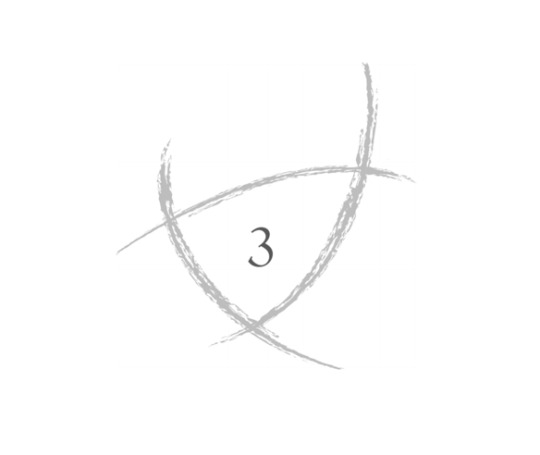
And then there are the 300 (three hundred!) Fox Way “villain” readings. (This was something that was particularly interesting to me.)
The first antagonist we meet is Whelk. When he comes for a reading at 300 Fox Way, he first pulls the Three of Swords.
When the women all draw cards together, they pull identical cards for Whelk: three of the Knight of Pentacles, then three of the Page of Cups. After drawing, essentially, three threes (the Three of Swords, then two sets of three matching cards) in this reading, the first Three of the entire series appears:
“Maura’s expression was dark, dark, dark” (TRB, 124).
The second “antagonist” we meet is the Gray Man, who comes to 300 Fox Way in The Dream Thieves to “observe.” Maura, Calla, and Persephone are predicting which card is on the top and bottom of the stack and the first card, predicted by Calla, is the Three of Cups off the top of the deck that Mr. Gray is holding (a remarkably happy card in stark contrast to Whelk’s Three of Swords).
When the third antagonist, Greenmantle, comes for his 300 Fox Way Reading he also draws the Three of Swords. The fact that each of the three antagonists come for a reading is in itself a sort of Three, but to further the importance of these moments, each of them draws some sort of three-related card.
All of the examples I have touched on have been more symbolic references to Three as a motif of the books as a whole. However, Threes also show up in the literal number of times important quotes are said/written.
I was tracking some of the most well-loved TRC lines to compile them, and noticed that the lines “don’t throw it away” and “safe as life” happen to appear exactly three times throughout the series. This was honestly pretty surprising based on the importance of those quotes – I would have assumed they showed up far more. Actually, they both appear twice in The Raven Boys and once in The Raven King. Threes, and the importance of Threes, is embedded so strongly into the narrative of The Raven Cycle that even the quotes we all think of as the most beloved of the series follow this rule of Threes.
Now, could you chalk some of these up to coincidence? I guess. But Gansey doesn’t believe in coincidences so I don’t either. So what’s the point of all these Threes?
Conclusion???
In a literal, literary way, Threes are a fourth wall break to make the importance of a moment obvious, but I’m not sure what the larger “point” of Threes is. My best analysis comes from the idea of The Raven Cycle being all about time and Threes playing into the importance of time as a sort of record scratch or loop. The Threes, as a stylistic, written motif, seem to connect the time-based cycle the characters experience to the time-based cycles the reader experiences by reading the books.
But my conclusion feels incomplete and so I would like to rely on the collective for this one – just about the most Raven Cycle thing you can do. So I’m asking you, the collective you, what conclusion would you draw? What do you think?
What I do know for sure is that Threes are magic, magic, magic.
For Your Convenience: Here is the textual significance given to threes within the books (chronologically):
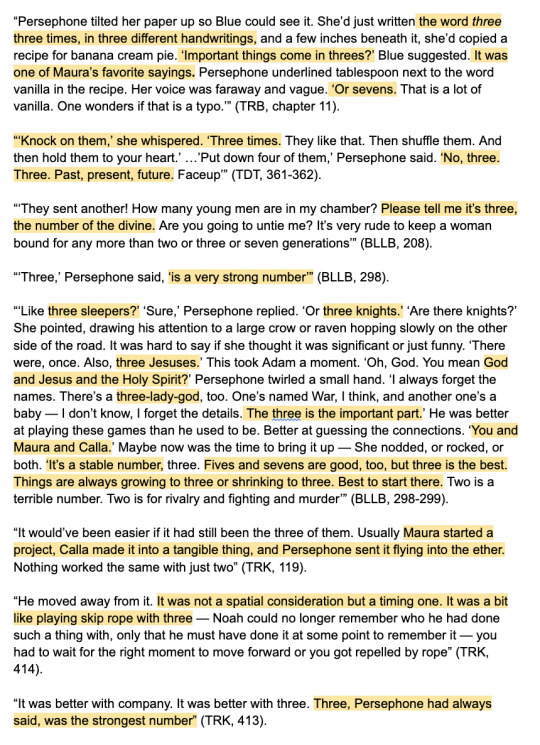
And here are the Threes, Threes, Threes (compiled):


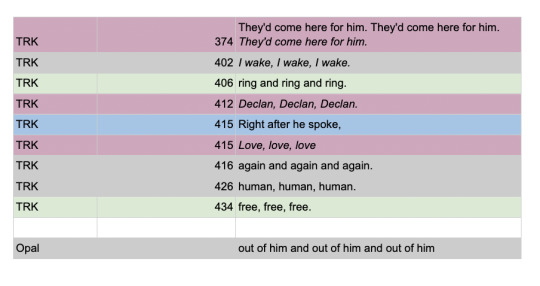
(If you made it to the end of all this, I love you. Have a gold star and a hug <3)
#sorry for the aggressive caps lock i wrote this in google docs#wow this is embarrassing#i'm okay with it#i spent my break writing a 16 page paper#the ganseyism of it all#some people asked for an essay so blame them not me#trc#trc analysis#maggie stiefvater#the raven cycle#the raven boys#the dream thieves#blue lily lily blue#the raven king#the gangsey#blue sargent#richard campbell gansey iii#ronan lynch#adam parrish#noah czerny#gangsey#mine
195 notes
·
View notes
Text
Bsd AU where Rimbaud and Verlaine didn't get to the lab in time and N managed to make Chuuya a weapon
Bsd AU where "Arahabaki", an 10 y/o kid, is sent to eliminate Japan's enemies in the Great War.
Bsd AU where Rimbaud and Verlaine are sent on the front so they stop Arahabaki from killing everyone.
Bsd AU where Chuuya uses Corruption to eliminate his country's enemies until he can't take anymore and passes out.
Bsd AU where Verlaine and Rimbaud are searching all over the war camps to find a little kid that's seen as a weapon.
Bsd AU where an 11 y/o Yosano finda a little kid lost amongst soldiers. The kid is hurt so she heals him. He never leaves her side again, too scared of getting hurt, too scared to be taken back to the lab.
Bsd AU where the Great War ended and Japan was on the winning side and Mori figured out who or what Chuuya was and wanted to have him.
Bsd AU where Chuuya and Yosano are put in confinement for their crimes during the war even though they won the war for their country. And they even have to be separated.
Bsd AU where Chuuya lost everything, family, safety, trust, friends, and N finds him and takes him back, proud of his work.
Bsd AU where after Fukuzawa defeats Mori and saves Yosano, the little girl tells him someone else needs to be saved.
Bsd AU where Chuuya escapes by himself from the lab and finds the Sheep. He doesn't trust them, everything is temporary. But he can’t help it. He gets attached and joins them.
Bsd AU where Verlaine and Rimbaud return to France thinking Arahabaki must've died but Verlaine can't accept it.
Bsd AU where after the Sheep betrays Chuuya he doesn't join the Mafia for them. It's not worth it. But Dazai doesn't kill them. He's too shocked Chuuya didn't made the choice he expected.
Bsd AU where after Chuuya leaves the Sheep he's found by Fukuzawa and gets reunited with his friend.
Bsd AU where Chuuya becomes a member of the Agency when he was 15 and felt pretty much happy since then.
Bsd AU where Chuuya and Murase have a father-son relationship because this time they can.
Bsd AU where Chuuya has friends that don't use him and that won't leave him, here in the Agency.
Bsd AU where years later Dazai joins the Agency and he's faced with the boy he couldn't predict.
Bsd AU where Chuuya is happy and goes drinking with Yosano and they accidentally get to a Mafia's bar but the people there, some dudes calling themselves the Flags, are chill and they bond.
Bsd AU where The Assassin King randomly sees some news from Japan about a detective and he realizes that's Arahabaki, no. Chuuya. And he feels bad he couldn't help him but he's also happy that Chuuya's not in pain anymore.
Bsd AU where at the beginning Chuuya can't trust Dazai but they end up working too good together not to.
Bsd AU where Chuuya accidentally meets Shirase and he (Shirase) apologizes for what he did to Chuuya. It's hard, but Chuuya forgives him and the Sheep.
Bsd AU where Chuuya is working on a case with the Europole and he has to work with some AI detective, Adam. Turns out the robot is cool and they become friends.
Bsd AU where Chuuya doesn't question his humanity, where Chuuya's friends are alive and he can see them all.
(Does this make sense? Prolly not, partially because English isn't my first language. Does it have plot holes? Definitely. Did it feel angsty when I wrote it? Yep. Be honest, am I delulu?? )
#bsd#bungou stray dogs#bsd au#chuuya bsd#the flags bsd#armed detective agency#ANGST#yosano akiko#dazai osamu#bsd fukuzawa#mori bsd#lippmann bsd#pianoman bsd#iceman bsd#albatross bsd#doc bsd#bsd shirase#bsd murase#adam frankenstein bsd
64 notes
·
View notes